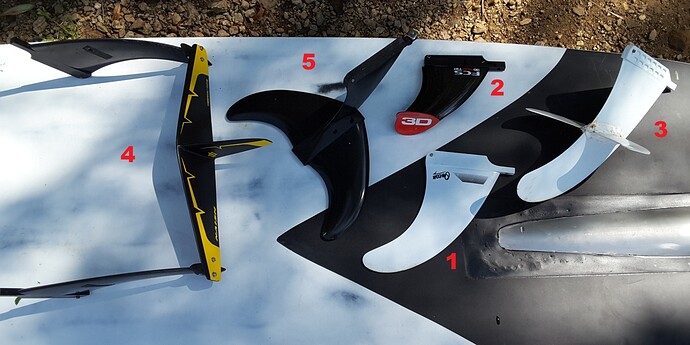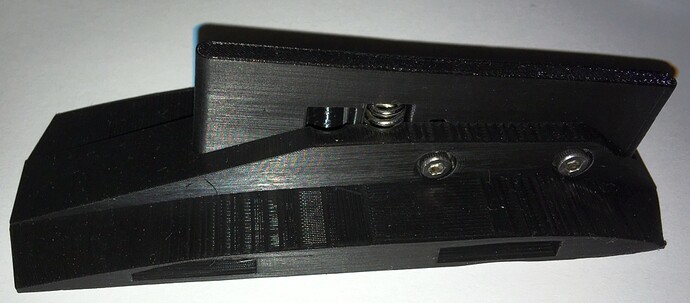When I first tried to ride Carver 18 months ago, for fear of surf being too fast, I set only half the performance. To my astonishment, Carver ride so slowly that it was almost a problem to keep on it and turning has also been problematic because turning with a tilt requires at least a certain minimum speed. Unfortunately, even the full performance drive did not bring any positive change. I weigh 90 kg. And there’s the rub.
The Carver was designed and its performance is sufficient for riders up to 80 kg. Otherwise, the problem is to achieve planning and surfing is kinda boring. It was just a great disappointment for me. Something had to be done about it.
What are the possibilities of Carver’s acceleration:
- buying Carver X
- reduction of total surfboard resistance
- reduction of the total weight of the rider
- optimizing the center of gravity position during the ride
- Lift the surfboard with modified fins with wings
Buying Carver X
With regard to the price, its higher weight, and given that it was not even available at the time, I did not go out this way.
Reduce the total resistance of the surfboard
I have not experimented in this area yet, but it offers the polishing of the underside of the surf to reduce the friction resistance and fill the free space of the grooves to hold the fins to prevent turbulence, which increases the overall resistance of the surfboard.
Reduce the weight of the rider
The cheapest way (and still saving for food ;-)), but it’s not the easiest way. But a few kilograms (pounds), with a little effort, gets everyone overweight. Do not forget, that the wet neoprene also weighs something.
Optimizing the center of gravity position while driving
Used positions of center of gravity on Carver
1 - basic position - the legs are in the footstraps position (the surf is too heavy on the butt and the front of the surf is too rising, which increases the overall resistance - also applies to a 75 kg weighing rider)
2 - center of gravity forward (suitable for surfing without planning)
3 - center of gravity shifted back for ride with winged fins (for normal turning)
4 - center of gravity shifted as far back as possible for ride with winged fins (speed riding almost without turning)
If Carver never reaches planning (the planning speed is about 17-18 km/h), it can be accelerated a bit by moving the center of gravity as far as possible. When planning begins, the surf gets a little bit up and the surfboard’s front starts feeling freely movable to the sides. When stopping at about 30 km/h, the surfboard drops by about 10 centimeters, and that’s already known a lot.
Lift the surfboard with modified fins with wings
You are all familiar with the principle of the hydrofoil, where both the surf and the rider are lifted above the surface, thus achieving minimal resistance. So I decided to relieve the surfboard in a similar way using the auxiliary wings on surfboards’ fins. I started experimenting with differently modified fins until I was successful.
Finally, I made a comparative measurement of the tested fins with roughly one minute of immediate follow-up rides in utterly no wind. I finally tested these fins (in brackets are given approximate purchase prices):
1 - standard Carver fins in the basic position (1a - position 1) and with center of gravity shifted forward (1b - position 2) (€33)
2 - 3D Red Tip FCS fins with center of gravity shifted forward - position 2 (€160, with 2 FCS to longboard adapters)
3 - 9 " fins with GL wings with center of gravity shifted forward - position 2 ($34, only screwed and joints covered with sanitary silicone)
4 - 6.5 " fins with Naish rear wing with center of gravity shifted forward - position 2, ($170, connecting parts printed on 3D printer and not included in price)
5 - 5" center fins with G7 wings (side fins) with center of gravity shifted forward - position 2, ($23, connecting parts printed on a 3D printer and not included in the price)
The comparative measurement of the fins took place immediately after my Carver had returned from repair when the power unit was replaced. After the repair, I recorded a performance increase of 14-15%. The same percentage, but the battery life dropped. Previously it was 16-18 minutes to full power. Now only 14-16 minutes. However, the riding distance under the same conditions remained the same.
The cheapest solution eventually proved to be the most effective. Here are the measurement results
The results show the desperately low speed of the standard fins in the basic position. The other fins with center of gravity shifted forward give roughly similar results. The speed is reasonable for turning, but planning is never reached. Excellent results are achieved only by the fins 5, which will allow the surfboard to go into planning. By moving the center of gravity backwards, further acceleration can be achieved up to 10 km/h.
Gradually reversing the center of gravity while riding at increasing speed (compensation of the wings generated torque together with the buoyancy force) I managed to reach a maximum speed of 30.9 km/h (without a wind). Flying kilometer - an average speed of 28.9 km/h (no turn). On one battery I went up to 6.79 km at an average speed of 26.4 km/h in 15:24 minutes (with cooling breaks). One-minute start-up on the operating speed of a four-minute ride significantly reduces my average, otherwise the average speed would be even higher.
Recording of a normal ride with fins 5 (position 3) and turning
The full speed takes about 1 minute, which reduces the average speed significantly in 4-minute riding (with cooling pauses). Now I normally drive at a speed of about 28 km/h, with an average of 24-26 km/h under wind conditions and a maximum of about 31 km/h. Flying kilometer can handle at about 29-30 km/h. I think these are quite acceptable results and the Carver ride is no longer boring.
So I managed to increase my values by more than 2.5 times against the values I achieved on Carver with original fins. Surf with these fins with wings but it is very sensitive to dirt in the water (one leaf or grass on the fin will slow surfboard down to 14-15 km/h) and the windscreen (it is appropriate to cross the wind).
Already twice, it happened that at a speed of over 30 km/h, the wings broke and drowned. The cause is probably the impact on some dirt or fish in the water. It will require a durable Carbon fins.
My fins research is not over yet, I will still improve the aerodynamics of the fins and will experiment with the starting angles of the wings. It would be advisable for the groove to hold the fins 10 cm longer and shifted forward. To reach the maximum speed, I have to stand at the back of the surf (the torque compensation)
at the point where the surf is narrowing (position 4), which is both uncomfortable and more difficult to turn. As a substitute, I am trying out a special finbox printed on a 3D printer that pushes the fins 12 cm forward, which I will now test.
Summary
Accelerating Carver with fins with wings is an effective and quite inexpensive solution. I think that everyone can use such fins. Lightweight riders at least save battery power.




